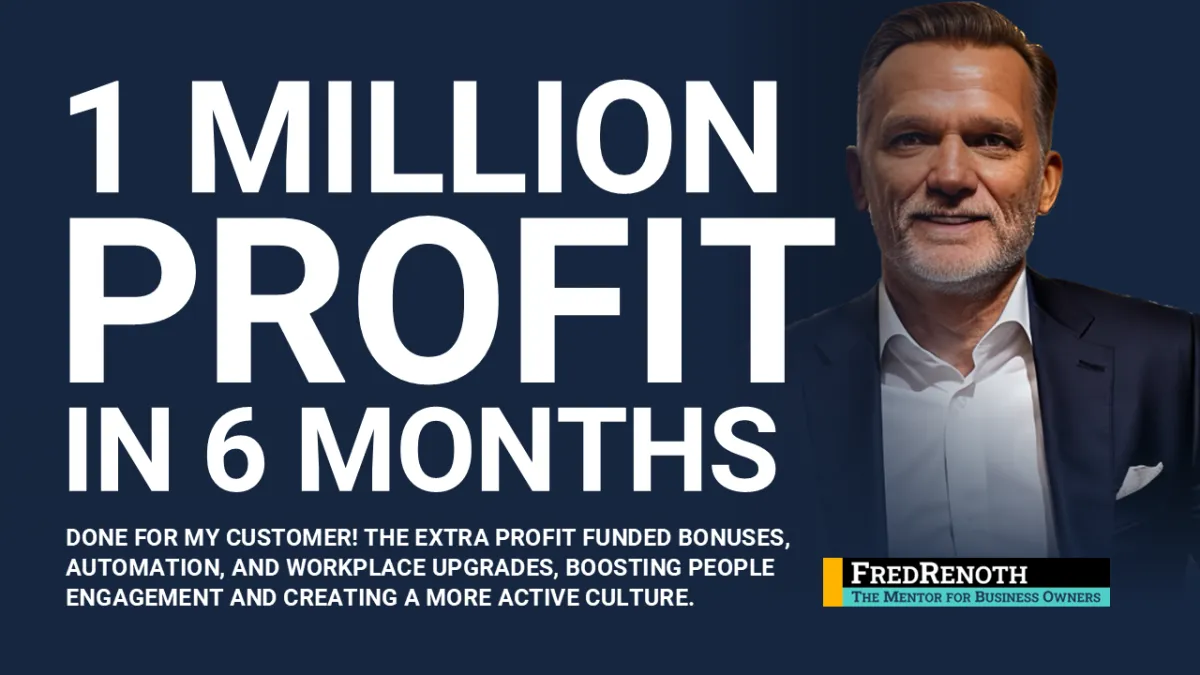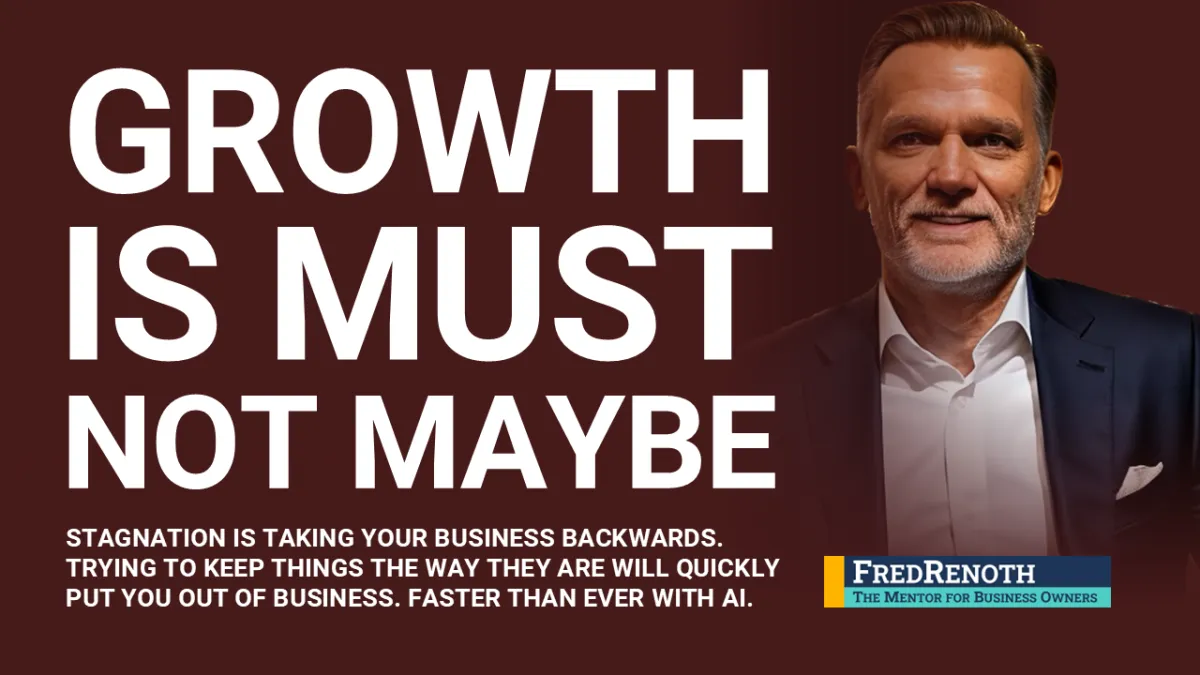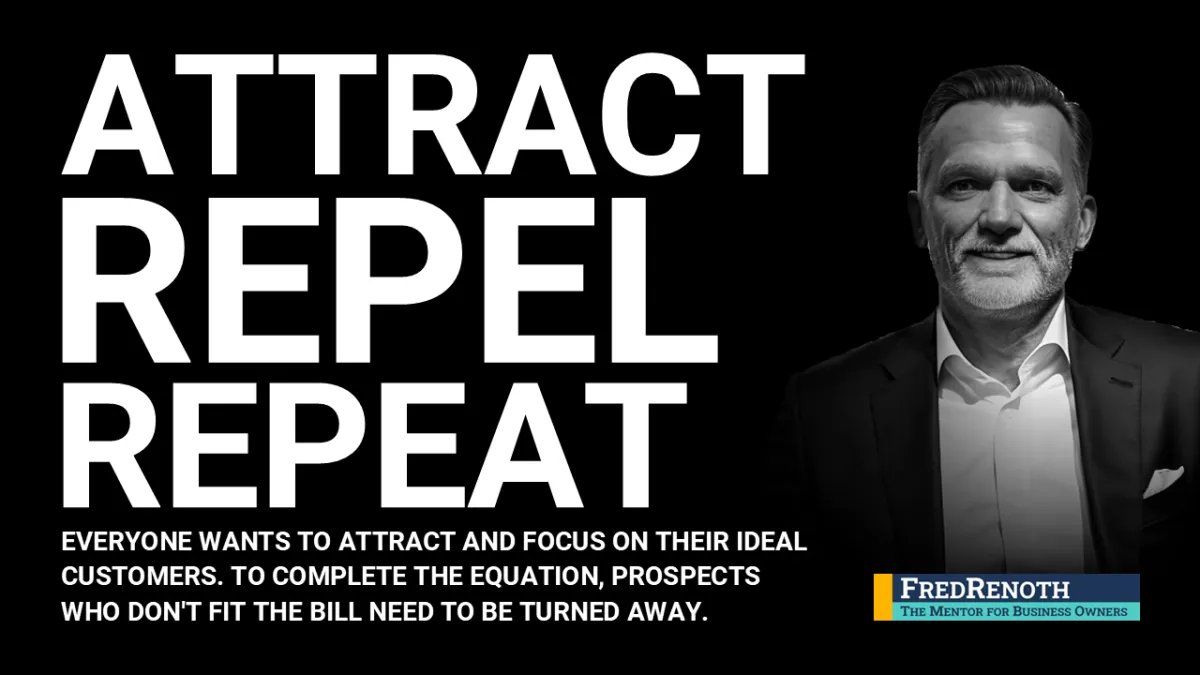


Welcome to Fred's
the Healthy Business BLOG

How I Made My Client $1 Million in 6 Months
When I first walked through the gates of the plant, the assignment seemed clear but daunting: double the profits. It was the kind of goal that had been going around in board meetings for years, talked about but never achieved. This wasn't some new startup just getting started.
This was a well-established plant, a subsidiary of a larger conglomerate, with eight years of steady, unremarkable performance behind it.
They had tried everything - or so they thought. They'd sent in task forces, launched optimization projects, and hired consultants. But here we were, eight years later, and the profits were stuck in place.
The Problem: When "Good Enough" Holds You Back
At first, nothing seemed obviously wrong. The plant wasn't a mess. There were no obvious signs of disorganization or major operational issues. Everything seemed to be working well, almost too well. The floors were clean, the processes were documented, and the staff seemed competent. But here's the tricky part: businesses that aren't in crisis can be the hardest to fix because the problems are hidden beneath layers of "this is how we've always done it." When things are broken, everyone knows where to start. But when things are just... okay, mediocrity becomes the invisible enemy.
What struck me was how much effort had already been poured into solving this problem. There were task forces with data, strategies, and good intentions. But even with all that work, the financial results were pretty much the same. The company's leaders were pretty frustrated. They had smart people, good products, and a strong market position. So why weren't they making more money? That's when I knew I wasn't just supposed to manage the plant. I had to look beyond what was in front of them and find those blind spots they were used to.
The Consequences: The Hidden Costs of Stagnant Profits
The real problem wasn't with the machines or the people - it was with the way of thinking. Over time, companies develop a kind of organizational blindness. Processes become seen as sacred because they've just always been done that way. Costs get thrown into budgets without question. Inefficiencies are often obvious, yet people just accept them because "that's just the way it's done." The plant didn't need another task force. What it needed was a fresh perspective, someone who wasn't tied down by the company's history or internal politics. That's where I come in.
Stagnant profits have consequences that go way beyond the balance sheet. At first, it seems like just numbers - revenues, expenses, margins. But it affects every part of the business. If we're not growing profits, there's less money to invest in innovation, employee development, and infrastructure. People's morale starts to dip when they feel like their hard work isn't paying off. This makes the company more vulnerable to competitors who are more agile, efficient, and profitable. Opportunities are missed, not because the company isn't capable, but because it's stuck in a cycle of doing the same things and expecting different results.
For this plant, the effects were subtle but undeniable. Employee engagement was just OK. It wasn't terrible, but it wasn't great either. There was a sense of routine, of just going through the motions. The leadership team felt the pressure from their own goals and from the main company that wanted to see results. While the company wasn't in dire financial straits, there was a growing realization that "good enough" wasn't going to cut it forever. They needed a breakthrough, not just a little bit of improvement.
The Solution: Applying the 80/20 Rule to Unlock Growth
When I took on the role, I knew the answer wasn't in complex strategies or fancy new systems. It was about going back to basics and using a principle I've relied on for years: the 80/20 rule. It's also called the Pareto Principle, and it says that 80% of results come from 20% of the effort. The key is finding the right 20%. That's where you'll find the gold.
I started with the profit and loss statement. It's more than just a bunch of numbers; it's a roadmap. It shows where the money is coming from and, more importantly, where it's disappearing. I took the whole list of expenses, copied it into a spreadsheet, and sorted it by the amount spent. The biggest costs popped right to the top, like rocks rising above the surface of a pond when the water level drops. I highlighted the top 20% of these expenses because that's where the real leverage was. It wasn't about making small changes to office supplies or overhead costs. It was about going after the big spenders - materials, labor, contractors.
Material costs were the first target. Most companies focus on negotiating better prices with suppliers, and while that's important, it's only half the story. The other half is about how much material is actually being used versus how much is being wasted. Waste can come in many forms, like defective products, inefficient processes, and poor quality control. Every piece of wasted material was a piece of profit thrown in the trash. We dug into the production processes, figured out where the waste was, and put tighter controls in place. It wasn't glamorous, but it was effective. By reducing waste, we were able to get more value from every dollar spent on materials.
We challenged the status quo on the procurement side. A lot of the company's supplier relationships had been around for years, and the prices had gradually gone up. People kind of just accepted that these prices were the cost of doing business. I didn't accept that. We went to the suppliers with competitive bids, looked into other options, and - most importantly - created an environment of healthy competition. When suppliers realized they had to earn the company's business, not just maintain it, we saw price reductions that had been considered impossible.
Labor costs were another big focus. It's a touchy subject, since it's about people's livelihoods. But, you know, improving labor doesn't always mean cutting jobs. It means making sure every role adds value. I did a deep dive into the staffing levels across departments and found a common issue: some areas had too many people, while others relied too much on expensive contractors. The company was paying a lot for contractors doing work that permanent staff could handle with the right training. We cut the contractor headcount, reassigned tasks, and launched a training program. This not only saved money but also boosted employee morale. People were happy about the investment in their development, and it made them feel like their roles were secure and important.
We also realized that we could save some money by cutting back on contractor expenses. A lot of contractors had long-term deals with not much oversight. It was the classic "set it and forget it" situation, where contracts are signed and then left untouched for years. We reviewed every contract, looked at how well people were doing, and changed the terms when we could. In some cases, we even ended up terminating contracts that weren't really making financial sense anymore. It wasn't about being ruthless; it was about being responsible with the company's resources.
The Transformation: How the Business Improved After the Changes
In just six months, we boosted the company's EBITDA by 3%. That might not seem like a lot, but when you're dealing with a company making over $30 million, that's like adding an extra million in profit. And it wasn't just a one-time thing. We set the groundwork for long-term success. The changes we made kept delivering results even after my assignment was over.
The impact of that extra profit went beyond the financial statements. The company introduced an employee bonus program to reward the people who had contributed to the turnaround. They also reinvested in automation and efficiency improvements, creating a more resilient business model. Employee engagement improved because people felt like they were part of something successful. Best of all, the company became more adaptable, better equipped to handle cost fluctuations, market changes, and competitive pressures.
With the extra cash, they were able to make the work environment more employee-friendly, including new equipment that reduced physical strain and improved safety. The culture shifted from one of passive routine to active engagement. Employees weren't just clocking in and out—they were part of a winning team, contributing to meaningful improvements that benefited everyone.
The 5-Point Action Plan for Profit Growth
If you're wondering how to apply these principles to your own business, the key is to start with awareness and follow through with focused action. Profit growth doesn't come from working harder — it comes from working smarter, finding the real opportunities, and having the courage to challenge what's been accepted for too long.
Here's a simple 5-point action plan to help you find hidden profits:
1. Take a fresh look at your numbers. Take a close look at your profit and loss statement. Don't just glance at the surface—look closely at every expense, every line item. Look for patterns or costs that have quietly grown over time without being questioned.
2. Apply the 80/20 Rule Relentlessly. Focus on the 20% of activities, expenses, or decisions that generate 80% of your results. That's where you'll find your biggest wins. Stop spreading your efforts thin and focus your energy on the areas that will get you the most results.
3. Challenge your assumptions. Question everything you think you know about your business operations. Just because you've always done something a certain way doesn't mean it's the best way. Be open to shaking up the routine and checking out new options, even in areas that feel like they can't be changed.
4. Don’t Fear External Perspectives. Sometimes, you're too close to the problem to see it clearly. Bring in someone new to the project—like a consultant, a trusted peer, or someone from outside your industry. An outsider doesn't have the baggage of your company's history, so they can spot inefficiencies that your team might miss.
5. Turn insight into action. Ideas are worthless without execution. The businesses that succeed aren't the ones with the best ideas—they're the ones that take action. Don't wait for the perfect plan; start with what you know, adjust as you learn, and keep moving forward.
Remember, profit growth isn't about finding a magic formula. It's about putting proven principles into action with discipline, curiosity, and a willingness to change. The opportunities are out there, you just need to look for them and take action.
Final Thoughts: Profit Growth Isn't Magic - It's Method
The story of this company isn't unique. A lot of businesses have trouble with stagnant profits, but it's not because they're doing everything wrong. It's because they're too close to see what's holding them back. The good news is that the solutions are often simpler than you think. It's about focusing on the right areas, questioning assumptions, and being willing to see what you've been missing. Profit growth isn't magic. It's all about the method. With the right approach, any business can achieve it.
Want to Take it a Step Further?
Enjoyed this article?
It may give you a taste of what we talk about with our clients in the FredRenoth Mentoring Program.
Check out our website (CLICK HERE FOR WEBSITE).
And, of course, I'm ready to answer all your questions in a Value Call. Just click the button below.
Like What you Read?
Get my weekly updates sent straight to your inbox. Just CLICK HERE to sign up.
Copyright 2025 Sysbizz LLC - All Rights Reserved
















